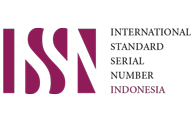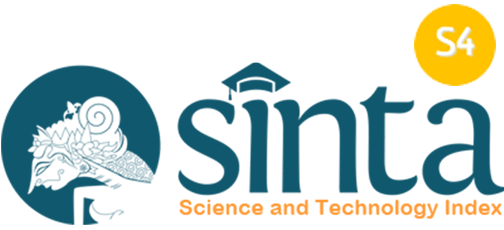Analysis of the Relationship Between Open Defecation Free Behavior and Water Quality in the Kalitebu River, Kali Kedinding Subdistrict, Surabaya
Abstract
The Kali Tebu River in Tanah Kali Kedinding Village, Kenjeran District, Surabaya City, is often used by many people to defecate. Data collected by the Tanah Kali Kedinding Community Health Center in 2023 shows that 48 heads of families (KK), or 0.30% of the total population, are still involved in Open Defecation (Open Defecation) in waterways that flow directly into the river. into the Kali Tebu River, this can pollute river water, changing the quality of river water. The aim of the research is to analyze the results of river water quality tests, water quality status. In this research, a questionnaire was filled out to find out the community profile, then tested the parameters based on Minister of Environment and Forestry Regulation No. 68 of 2016 which consists of TSS, pH, BOD, COD, Fatty Oil, Ammonia, and Total Coliform. Then compare the quality status of the Storet method and the Pollution Index (IP) which is guided by Minister of Environment Decree No. 115 of 2003 with River Water Quality in accordance with PP RI No. 22 of 2021 . The test results for the TSS, BOD, COD, Ammonia, Fatty Oil and Total Coliform parameters of the Kali Tebu river do not meet the class quality standards in accordance with Government Regulation no. 22 of 2021, while the pH, COD and fatty oil parameters are compliant. Then the water quality status in the Kali Tebu River was determined using the storet method at points 1 – 3, all of which were included in the heavily polluted category with result values of -102, -100, -98. Meanwhile, to determine water quality status using the average Pollution Index at points 1 - 3, it is included in the heavily polluted category with PIj values > 10, namely 20, 22, 23.
Keywords
Full Text:
PDFReferences
Aminah, S., & Wahyuni, S. (2018). The Relationship between Well Construction and Distance from Pollution Sources to Total Coliforms in Dug Well Water in Hamlet 3A, Karang Anyar Village, Jati Agung District, South Lampung Regency. Journal of Health Analytics , 7 (1), 698-703.
Arsyina, L., Wispriyono, B., Ardiansyah, I., & Pratiwi, LD (2019). Relationship between Drinking Water Source and Total Coliform Content in Household Drinking Water. Indonesian Journal of Public Health , 14 (2), 18-23.
Hermawan, YI, & Wardhani, E. (2021). Cibeureum River Water Quality Status, Cimahi City. Journal of Natural Resources and Environment , 8 (1), 28-41.
Novembrianto, R., & Muzaky, MA (2023). Analysis of the Pollution Index in Rivers Due to Detergent Soap Industrial Activities in the Surabaya Region. ESEC Proceedings , 4 (1), 248-253.
Nurbaya, F., KM, S., Sari, DP, & KM, SKM (2023). Water and Air Parameters and River Water Quality Tests . Pt Arr Rad Pratama.
Nursalim, N., Saputri, MM, Nurlinda, N., Muhammad, S., Jumawati, J., Irfan, J., ... & Hidayatullah, M. (2020). Community Development in Improving Environmental Sanitation. INTEGRITY: Journal of Service , 4 (1), 95-102.
City Regional Regulation Number 02 of 2004 concerning Water Quality Management and Water Pollution Control in Surabaya.
Regulation of the Minister of Environment and Forestry of the Republic of Indonesia Number 68 of 2016 concerning Domestic Waste Quality Standards.
Republic of Indonesia Government Regulation no. 22 of 2021. Concerning the Implementation of Environmental Protection and Management.
Soukotta, E., Ozsaer, R., & Latuamury, B. (2019). Analysis of the Chemical Quality of Riuapa River Water and Its Impact on the Environment. Journal of Small Island Forestry , 3 (1), 86-96.
Refbacks
- There are currently no refbacks.







